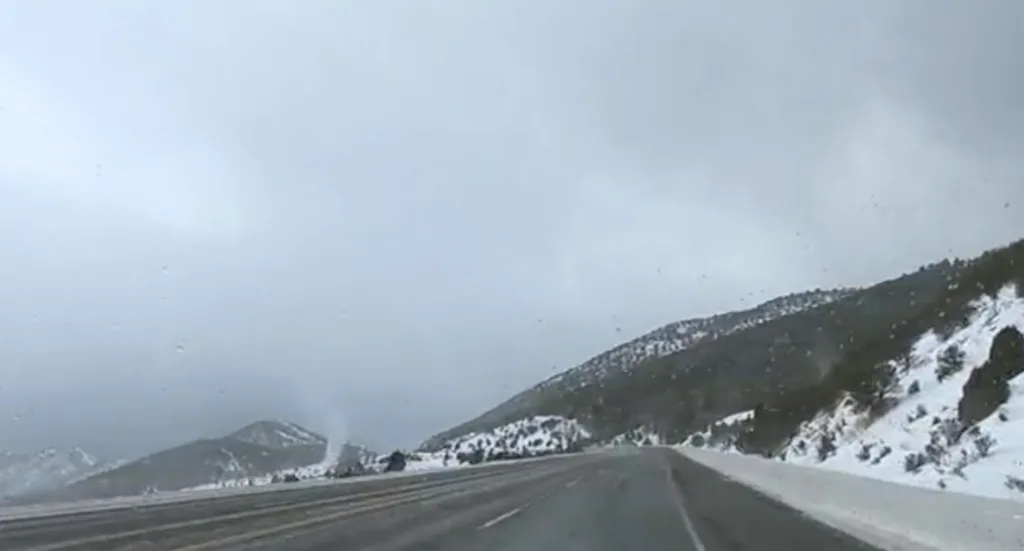Tornadoes are known to be one of the most devastating natural disasters on earth. These rotating columns of air can cause significant damage to anything in their path, including buildings, trees, and people. However, what many people do not realize is that tornadoes can also occur in snow. These rare and elusive phenomena are known as snownadoes.
Snownadoes, as the name suggests, are tornadoes that occur in snowy conditions. They are formed in much the same way as regular tornadoes, with the difference being that they are powered by cold air instead of warm air. This makes them much less common than regular tornadoes, as the conditions required for their formation are much more specific.
To understand how a snownado forms, it is important to understand the basics of how tornadoes form. Tornadoes are typically formed when warm, humid air collides with cold, dry air. This creates a spinning column of air, which can be intensified by other factors such as wind shear, instability, and moisture. In the case of snownadoes, the air is already cold, so the warm and humid air is replaced by air that is warmer and more humid than the surrounding atmosphere.
One of the most important factors in the formation of a snownado is the presence of a temperature gradient. This means that there must be a significant difference in temperature between the ground and the air above it. This temperature gradient creates a layer of warm air close to the ground, which is then lifted by the cold air above it. This creates the necessary spinning motion that can lead to a snownado.
Another important factor in the formation of a snownado is wind shear. This refers to the difference in wind speed and direction between different levels of the atmosphere. Wind shear can cause the spinning motion of the air to become more intense, which can then lead to the formation of a snownado.
Snownadoes are extremely rare, with only a handful of documented cases in history. They are typically much smaller and weaker than regular tornadoes, but they can sill be dangerous. The main danger posed by a snownado is the potential for it to cause significant damage to buildings and other structures. In addition, the strong winds associated with a snownado can also cause significant damage to trees and other vegetation.
Snownadoes are a rare and elusive natural phenomenon that occur in snowy conditions. While they are much less common than regular tornadoes, they can still be dangerous and should be taken seriously. The conditions required for the formation of a snownado are specific and complex, but they typically involve a temperature gradient and wind shear. As with any natural disaster, it is important to be prepared and to take appropriate precautions in order to stay safe.
Can There Be A Tornado In The Snow?
Yes, tornadoes can occur during winter storms and even in the presence of snow. These types of tornadoes are known as winter tornadoes or snow tornadoes. They typically occur in regions where there is a clash between cold, dry air and warm, moist air. This situation can create instability in the atmosphere that can lead to the formation of tornadoes. Additionally, winter tornadoes may also be caused by strong wind shear, whch is a sudden change in wind direction or speed at different altitudes. However, winter tornadoes are relatively rare compared to those that occur during spring and summer months. It’s worth noting that winter tornadoes can also be accompanied by heavy snow and ice, which can make them even more dangerous.

Can It Tornado In The Winter?
Yes, tornadoes can occur in the winter season. Although they are less common in winter than in spring and summer, they can still form under the right conditions. The formation of tornadoes requires warm, moist air colliding with cold, dry air, which creates instability in the atmosphere. In the winter, this can occur when a cold front moves in and collides with warm, moist air from the Gulf of Mexico or other sources. Even if the surface temperature is cold, if the temperature is colder higher up in the atmosphere, it can create the necessary wind shear for a tornado to form. Other factors, such as atmospheric instability and wind patterns, can also contribute to tornado formation in the winter. So, wile tornadoes are less common in the winter, they can still occur under the right conditions.
Has There Ever Been A Snownado?
There have been snownadoes recorded on camera, but they are extremely rare. To be precise, only six snownadoes have ever been captured on camera. Due to their infrequency, there is still very little known about them. However, it is believed that snownadoes are closely related to waterspouts, which are rotating columns of air that form over water. Snownadoes, on the other hand, form over either frozen lakes or snow-covered areas. More research is needed to fully understand the formation and behavior of snownadoes.
Conclusion
Tornadoes in snow, also known as snownadoes, are a rare meteorological phenomenon that occur when the necessary ingredients for a tornado combine with cold temperatures and snow or ice on the ground. While the occurrence of snownadoes is uncommon, they can stll pose a significant threat to those in their path, causing damage and potential danger. Despite their rarity, it is important for individuals living in areas prone to winter tornado outbreaks to be aware of the potential for snownadoes and to take necessary precautions in the event of severe weather. Further research on snownadoes is needed to better understand the conditions that lead to their formation and to improve the ability to predict and prepare for these rare and unique weather events.
